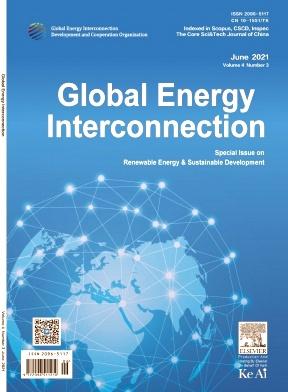基于增强互联和阻尼分配的永磁同步电机无源控制
IF 2.6
Q4 ENERGY & FUELS
引用次数: 0
摘要
永磁同步电机(PMSMs)由于其优越的效率和动态性能而广泛应用于高性能驱动领域。然而,由于非线性动力学、参数变化和不可测量的外部干扰,特别是负载转矩波动,它们的控制仍然具有挑战性。本研究提出了一种增强的互连和阻尼分配无源控制(IDA-PBC)方案,该方案在端口控制哈密顿(PCH)框架内制定,以解决这些限制。嵌入非线性扰动观测器,实时估计和补偿由参数不确定性和外部负载引起的集总不匹配扰动。此外,采用基于平面度的控制策略在非线性驱动系统中生成所需的电流参考,确保对时变速度命令的准确跟踪。这种集成方法保留了系统基于能量的结构,在增强鲁棒性的同时进行了系统稳定性分析。所提出的控制体系结构在可调参数数量有限的情况下保持了较低的复杂性,便于实际实现。仿真和实验结果表明了该方法的有效性和鲁棒性。与传统的比例积分(PI)控制和标准的IDA-PBC控制策略的对比分析证实了其处理扰动和保持动态性能的能力。本文章由计算机程序翻译,如有差异,请以英文原文为准。
Enhanced interconnection and damping assignment passivity-based control for PM synchronous motors
Permanent Magnet Synchronous Motors (PMSMs) are widely employed in high-performance drive applications due to their superior efficiency and dynamic capabilities. However, their control remains challenging owing to nonlinear dynamics, parameter variations, and unmeasurable external disturbances, particularly load torque fluctuations. This study proposes an enhanced Interconnection and Damping Assignment Passivity-Based Control (IDA-PBC) scheme, formulated within the port-controlled Hamiltonian (PCH) framework, to address these limitations. A nonlinear disturbance observer is embedded to estimate and compensate, in real time, for lumped mismatched disturbances arising from parameter uncertainties and external loads. Additionally, a flatness-based control strategy is employed to generate the desired current references within the nonlinear drive system, ensuring accurate tracking of time-varying speed commands. This integrated approach preserves the system’s energy-based structure, enabling systematic stability analysis while enhancing robustness. The proposed control architecture also maintains low complexity with a limited number of tunable parameters, facilitating practical implementation. Simulation and experimental results under various operating conditions demonstrate the effectiveness and robustness of the proposed method. Comparative analysis with conventional proportional-integral (PI) control and standard IDA-PBC strategies confirms its capability to handle disturbances and maintain dynamic performance.
求助全文
通过发布文献求助,成功后即可免费获取论文全文。
去求助
来源期刊

Global Energy Interconnection
Engineering-Automotive Engineering
CiteScore
5.70
自引率
0.00%
发文量
985
审稿时长
15 weeks
 求助内容:
求助内容: 应助结果提醒方式:
应助结果提醒方式:


